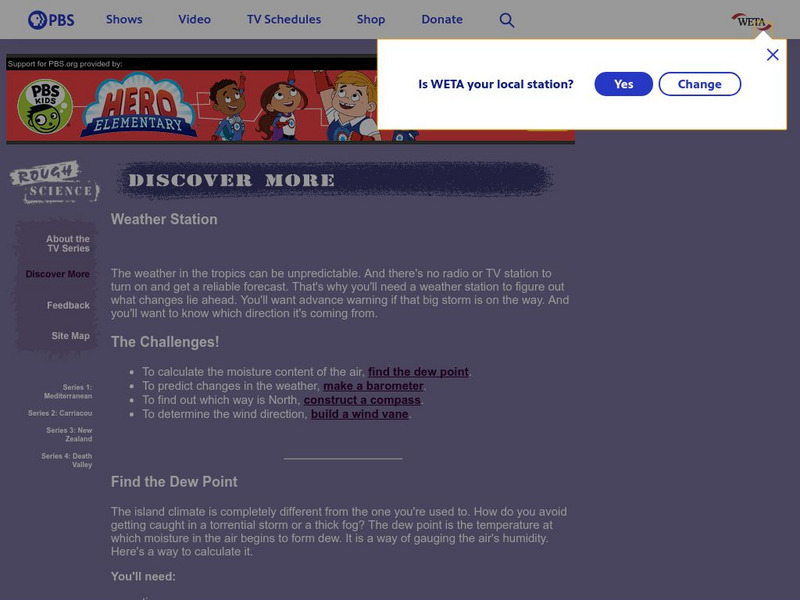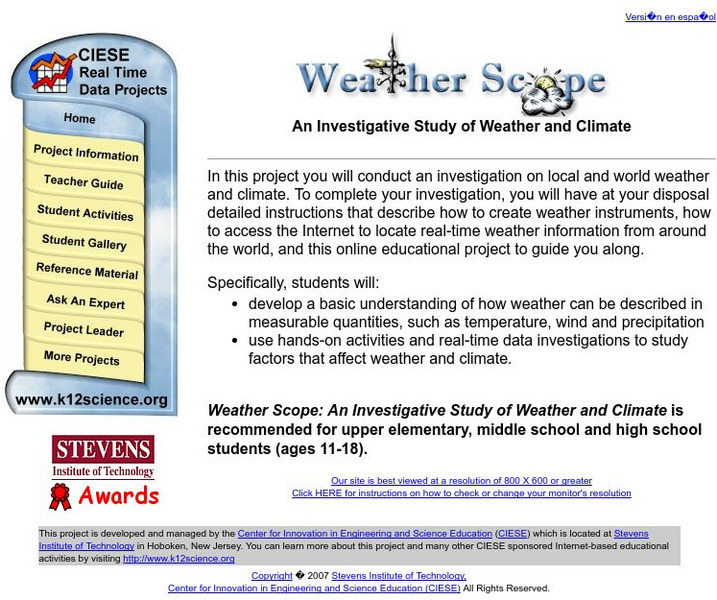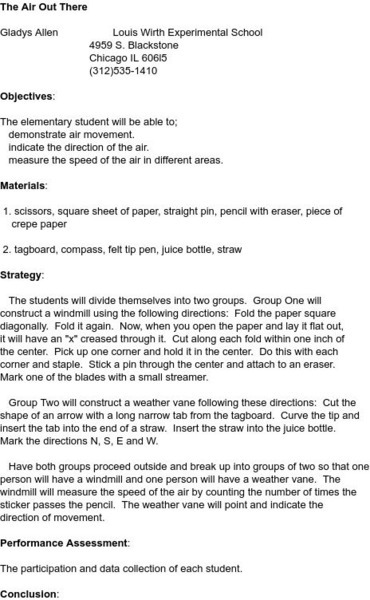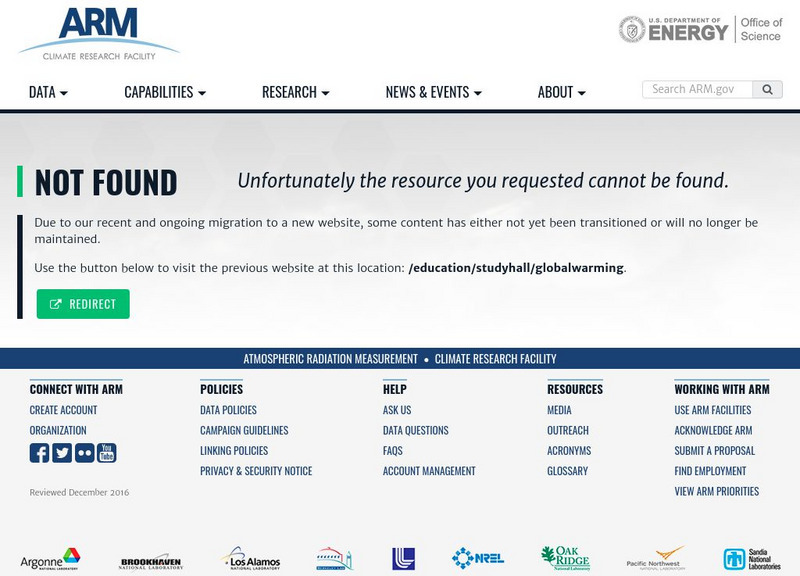PBS
Pbs: Rough Science: Weather Station
PBS asks users to imagine that they are in the tropics and need to get a reliable weather forecast. It provides instructions on how to build a wind vane, construct a compass, make a barometer and find the dew point.
eSchool Today
E School Today: Your Cool Facts and Tips on Wind
Learn all about wind, what it is, words used to describe wind, the different types, the coriolis effect, different types of breezes, and how wind is measured.
American Geosciences Institute
American Geosciences Institute: Earth Science Week: Build Your Own Weather Station
Students are guided in how to build their own weather station that will measure temperature, humidity, precipitation, atmospheric pressure, and wind direction and speed.
TeachEngineering
Teach Engineering: Engineering for the Earth
Young students are introduced to the complex systems of the Earth through numerous lessons on its natural resources, processes, weather, climate and landforms. Key earth science topics include rocks, soils and minerals, water and natural...
Center for Innovation in Engineering and Science Education, Stevens Institute of Technology
Ciese Real Time Data Projects: Weather Scope: A Study of Weather and Climate
Use real-time data to study factors that affect weather and climate, create weather instruments, and share data with students around the world.
American Museum of Natural History
American Museum of Natural History: O Logy: Stuff to Do: Make a Weather Station
Make a wind vane, rain gauge, and barometer and learn how to measure wind direction, rainfall, and air pressure.
TeachEngineering
Teach Engineering: Backyard Weather Station
In this hands-on activity, students use their senses to describe what the weather is doing and to predict what it might do next. After gaining a basic understanding of weather patterns, students will become state park engineers and build...
Science and Mathematics Initiative for Learning Enhancement (SMILE)
Smile: The Air Out There
Cooperative learning activity in which students will create a windmill and a weather vane. Students will find the direction of wind and the speed relative to the spinning windmill. Great for K-2.
The Franklin Institute
Franklin Institute: Make Your Own Weather Station
This page, provided by the Franklin Institute, shows you how to become an amateur meteorologist. Directions on how to construct a weather station include the barometer, hygrometer, rain gauge, weather vane, and compass.
Curated OER
Science Kids: Science Images: Weather Vane
A weather vane can be seen on top of a house roof. It shows the letters N, S, E, W which represent north, south, east and west. It is used for wind direction.
Other
Arm Program's Education Center: Global Warming
An all purpose site with something for everyone. Learn about global warming and climate change, ask a scientist, take a quiz, or get a lesson plan!
Mocomi & Anibrain Digital Technologies
Mocomi: Recording Daily Weather
Learn about weather forecasting, the different gadgets used to predict the weather, and other interesting facts.









